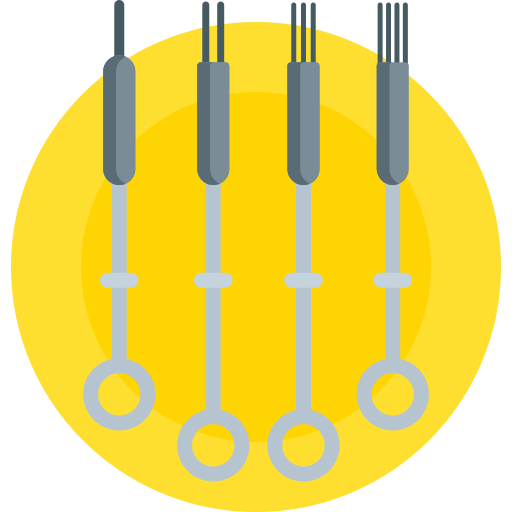Content
- Paul, Weiss Shortlisted in Financial Times’ Innovative Lawyers Europe Awards
- ICT 2024 Mentorship – Lecture 4 Notes
- Tips For Monitoring Liquidity Levels
- The Strategy Behind Buy Side and Sell Side Liquidity
- How Much Do Buy-Side Analysts Make?
- Why is Liquidity important in trading?
- Paul, Weiss Named “International Law Firm of the Year” at The Lawyer Awards
You may use it for free, but reuse of this code in publication is governed by House rules. Self-confessed Forex Geek spending my days researching https://www.xcritical.com/ and testing everything forex related. I have many years of experience in the forex industry having reviewed thousands of forex robots, brokers, strategies, courses and more. I share my knowledge with you for free to help you learn more about the crazy world of forex trading! ICT Internal Range Liquidity (IRL) and ICT External Range Liquidity (ERL) concept is beneficial for identifying the potential daily bias.
Paul, Weiss Shortlisted in Financial Times’ Innovative Lawyers Europe Awards
They pool capital from investors and invest the funds on behalf of their clients in a wide range of assets to generate profit. He spends time marketing his firm based on his strategy’s returns over the past 10 years and is able to raise $10 million in capital from a variety of investors. He starts investing this capital and buys a variety of securities, including stocks, bonds, futures, and options, all aligning buyside liquidity with his strategy.
- The structure of financial markets and the ease of access for various participants can also affect buy side liquidity.
- Let’s explore this concept in more detail and see how it impacts the broader market.
- Similar considerations may apply on an IPO (and, noting the recent changes to the U.K. listing regime, we might expect U.K. IPOs to pick up in the medium term).
- When liquidity is ample, trades can be executed quickly and at prices close to the current market value.
- Receivables, payables, inventory, and cash flow are the key factors to look at.
ICT 2024 Mentorship – Lecture 4 Notes
The level of buy side liquidity can greatly influence market prices and the ease with which securities can be traded. Experienced market participants, including institutional investors, may strategically adjust prices to access liquidity when necessary. Inducement strategies find advantageous liquidity levels for selling securities on both the buying and selling sides. Our Private Equity Group is considered the go-to practice for complex, bespoke and firm-defining transactions. The depth and continuity of our relationships across the industry gives us a nuanced understanding of each client’s objectives and allows us to provide seamless, efficient counsel across the investment lifecycle. Because private equity funds make money by buying and selling securities, they are considered to be buy-side.
Tips For Monitoring Liquidity Levels
This clustering of long exit orders underneath evolving foundation levels carves out distinct sell side liquidity zones. ICT is an approach that strives to decipher the intricate dynamics of the markets, as well as replicate the behaviour of astute institutional investors. The integration and application of ICT trading concepts can deliver a substantial boost to a trader’s performance. ICT traders focus on finding key levels where market participants are likely to place their stop orders in the futures market. The Inner Circle Trader (ICT) methodology offers a distinctive perspective on the markets, attracting numerous traders with its unconventional approach to price action in foreign exchange, crypto, and other markets.
The Strategy Behind Buy Side and Sell Side Liquidity
Ongoing observation strengthens pattern recognition when seeking opportune times to trade evolving market structures. Formations of spikes validate the intensification as the zones are disintegrated under pressure. The advent of high-frequency trading, algorithmic trading, and other technological innovations has made it easier for investors to participate in the market, thus enhancing buy side liquidity. Technology has enabled faster and more efficient trade executions, reduced transaction costs, and provided access to real-time market data.
How Much Do Buy-Side Analysts Make?
For retail investors, lower costs mean more of their investment is actually working for them rather than being eaten up by fees. For institutional investors, it allows for more efficient execution of large orders, enhancing their overall portfolio performance. When both buyside and sellside liquidity are in equilibrium, it leads to a well-balanced and robust forex market. This balanced environment offers traders and investors attractive trading opportunities, reduced transaction costs, and better risk management. Moreover, it tries to help prevent extreme price fluctuations, promotes market stability, and enhances overall trader confidence. Buy-side analysts regularly work in non-brokerage firms including pension and mutual fund providers.
Why is Liquidity important in trading?
This reduces the likelihood of slippage, where the final execution price deviates from the expected price. Efficient markets benefit all participants as they provide a reliable environment for buying and selling assets. It also means that information is quickly reflected in asset prices, leading to more accurate price discovery. In an efficient market, resources are allocated more effectively, contributing to overall economic growth.
Paul, Weiss Named “International Law Firm of the Year” at The Lawyer Awards
The clustered stopping zones above evolving resistance can be especially revealing of shorts if they are broken in a manner that sparks short-covering-driven accelerations higher. The concept of liquidity in financial markets is twofold, comprising both buy side and sell side liquidity. While sell side liquidity refers to the availability of securities for sale, buy side liquidity focuses on the demand for these securities. Buy side liquidity is essentially the availability of buyers in the market who are ready and willing to purchase securities at various price levels.
The buy-side activity takes place in many settings not limited to the financial institutions mentioned above. Short sellers reasoning the upside momentum has expired may enter shorts at or above these technical levels. Understanding where these short sellers typically place their protective stop-loss orders provides valuable insight into potential buy side liquidity zones. Ultimately, buy side liquidity is essential for a healthy and functioning market. It ensures that there are always buyers for securities, facilitating price discovery and reducing volatility. As market participants continue to evolve and adapt to changing conditions, buy side liquidity will remain a crucial aspect of financial markets.
Keeping an eye on changing liquidity maximizes opportunity around confirmed zones. The framework is useful for assessing what the potential risk/reward could be between the fluctuations within the cycles. Upside purchase constraints use higher-level expansion in time frames, with downside profit objectives pointing to the proximity of underlying support. Integrating structure given through supply and demand areas, either buying with, against, or in the absence of the prevailing sentiment, improves trade construction. When the accumulation and distribution territories take form, the traders can position themselves relative to those concentrations. In summary, there are meaningful distinctions between the ultimate goals, functions and incentives driving behaviour on the buy versus sell sides of global financial markets.
Their buying decisions are closely watched by other market participants, and their actions can create ripple effects throughout the market, affecting prices and liquidity levels. When trading reversals, traders should look for price actions that confirm a potential reversal around buy side or sell side liquidity levels. These confirmations can come as engulfing candles, pin bars, or other key market patterns. Adequate buy side liquidity plays a vital role in maintaining price stability in the market.
These advancements allow institutional and retail investors to react quickly to market changes, thereby increasing overall market liquidity. Central banks’ monetary policies, such as interest rate adjustments and quantitative easing, can affect the availability of funds for investment, thereby impacting buy side liquidity. Lower interest rates reduce the cost of borrowing, encouraging businesses and individuals to take loans and invest in various financial instruments. Conversely, higher interest rates might reduce liquidity as borrowing costs rise.
ICT Fair Value Gap is marked as the liquidity because it is a formation of three candles leaving an area between high and low of 1st and 3rd candle where price do not overlap. According to ZipRecruiter, the average salary for a buy-side analyst is about $108,000 per year, as of August 2021. However, this figure does not account for bonuses or non-salary benefits, which can be considerable. Salary also varies by city, firm, and how many years of experience an analyst may have. See our Terms of Service and Customer Contract and Market Data Disclaimers for additional disclaimers. Always do your own careful due diligence and research before making any trading decisions.
But if price takes internal range liquidity first and the external range liquidity is resting below the bias should be bearish as price is going to take the external range liquidity below. While the low of an ICT dealing range is known as “sell side liquidity” assuming the sell stops resting below the low of dealing range. Although the positions are similar, sell-side analysts have a more public-facing role than those on the buy side.

















